Whose Forests? Class 5 Notes EVS Chapter 20
| Table of contents |

|
| Introduction |

|
| Daughter of the jungle |

|
| Growing Up |

|
| Suryamani’s journey |

|
| Suryamani’s Torang |

|
| Lottery for farming in Mizoram |

|
| Jhoom farming |

|
Introduction
The chapter “Whose Forests” describes the story of a girl named Suryamani who fought for saving the forests of Jharkhand in Jharkhand Jungle Bachao Andolan. Also, the chapter briefs us about the forests and farming of Mizoram. Here you will find Question Answers to the Chapter Whose Forests while the Summary Notes of the Chapter are discussed in a separate post.
Daughter of the jungle
The children are going to the forest. There they jump, run, climb trees and sing songs in their language called Kuduk. They pick the fallen flowers and leaves, to weave them into necklaces. They enjoy the wild fruits. They look for birds to imitate their calls.

Every Sunday Suryamani takes the children to the forest. She shows them how to recognize trees, plants, and animals. Suryamani always says, “To learn to read the forest is as important as reading books.” She says, “We are forest people (adivasis). Our lives are linked to the forests. If the forests are not there, we too will not remain.”
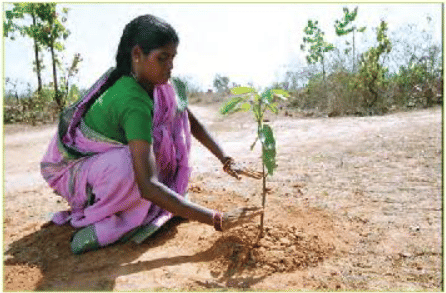
Growing Up
Suryamani loves the forest since childhood. She would choose the path through the forest to her school rather than the direct road. Her family had a small field. They used to collect leaves and herbs from the forest and sell them in the market for their livelihood. Her mother would weave baskets from bamboo or make leaf plates out of the fallen leaves.
 Bamboo baskets
Bamboo baskets
- Since Shambhu the contractor came there no one was allowed to enter the forest to collect anything. The people of Suryamani’s village were afraid of contractors except for Budhiyamai. She would say, “We the people of this forest have a right over it. We look after our forests; we don’t cut trees like these contractors. The forest is like our ‘collective bank’- not yours or mine alone. We take from it only as much as we need. We don’t use up all our wealth.”
- Suryamani’s father could no longer support the family on the small land. He moved to the town in search of work. But things did not improve. Sometimes there would be no food in the house. At times Maniya Chacha (uncle) would send some grain from his small shop to Suryamani’s house.
- Chacha tried hard and got admission for Suryamani in the school in Bishanpur. Here they would not have to pay for the fees, uniforms, and books. Suryamani would have to stay there and study. Suryamani didn’t want to leave her village and forest. But Maniya Chacha was firm. Chacha explained to Suryamani that it was important for her to study, to understand the laws. Maybe then she can help to save the forests of her area”. Suryamani listened and agreed to join the school at Bishanpur.
Suryamani’s journey
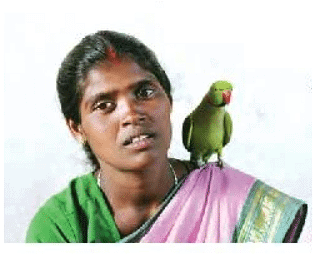
- Suryamani was filled with joy in seeing the school at Bishanpur. The school was near a thick forest. Suryamani studied hard and passed her B.A. after getting a scholarship. She was the first girl in the village to do this. While she was in college, she met Vasavi didi, a journalist. Suryamani soon joined her to work for the Jharkhand Jungle Bachao Andolan (Movement to Save the Forests of Jharkhand).
- This work took Suryamani to far-off towns and cities. Her father did not like this. But Suryamani continued her work. Not only that, but she also started to fight for the rights of the village people. Her childhood friend Bijoy helped her in this work.
- Suryamani had another friend ‘Mirchi’, who stayed with her day and night. Suryamani would share all her thoughts and dreams with Mirchi. Mirchi would listen and say “Keee Keee.
- Suryamani had a dream for her Kuduk community. She wanted all her people to feel proud of being Adivasis tribals.
Suryamani’s Torang
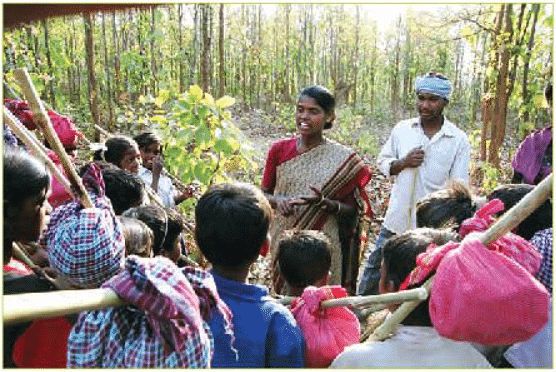
- Suryamani was 21 when she opened a center, with the help of Vasavi didi and others. She called it ‘Torang’, which means jungle in the Kuduk language. Suryamani wanted that at festivals people should sing their own songs. They should not forget their music and should enjoy wearing their traditional clothes.
- Children should also learn about herbs, medicines, and the art of making things from bamboo. Children should learn the language of school but must link it with their own language (mother tongue). All this happens in the 'Torang centre'. Many special books about the Kuduk community and other Adivasis have been collected. Flutes and different types of drums are also kept there.
- Whenever something is unfair, or if someone is afraid that his land and livelihood would be taken away, they turn to Suryamani. Suryamani fights for everyone’s rights.
- Suryamani and Bijoy have got married and work together. Today their work is praised by many people. She is invited, even to other countries, to share her experiences. People of her area are also raising their voices for a new forest law.
Lottery for farming in Mizoram
- The farming land in Mizoram belongs to the whole village and they take turns to do farming on different parts of the land. There would be a special meeting of the Village Council (Panchayat). At the meeting, there would be a lottery to decide which family will get how much land for farming.
- A beautiful pot made of bamboo was shaken well. One chit was taken out. Saima Sir’s family got the first chance. He said, “I am happy that my family gets to choose first. But this year we cannot take more land. Last year I had taken more and was not able to farm it well. After my sister, Jhiri got married and went away it is difficult to manage to farm alone.”
- Saima Sir asked for three tin’ of land. Little Mathini asked, “What is three tin of land? Chamui explained, “The land on which we grow one tin of seeds is called one tin of land.” One by one, the village families got their piece of land for farming.
Jhoom farming
Jhoom farming is a very interesting type of farming. After cutting one crop, the land is left as such for some years. Nothing is grown there. The bamboo or weeds which grow on that land are not pulled out. They are cut and burnt. The ash makes the land fertile. While burning, care is taken so that the fire does not spread to other parts of the forest. When the land is ready for farming it is lightly dug up, not plowed. Seeds are dropped on it. On one farm different types of crops like maize, vegetables, chilies, and rice can be grown.
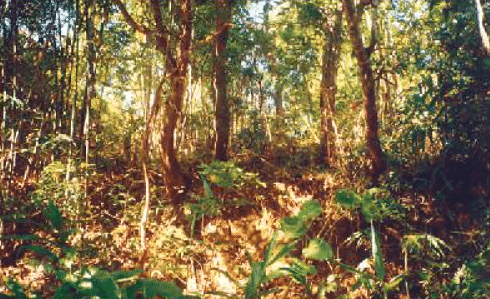
- Weeds and other unwanted plants are also not pulled out, they are just cut. So that they get mixed with the soil. This also helps in making the soil fertile. If some family is not able to do farming on time, others help -them and are given food.
- The main crop here is rice. After it is cut, it is difficult to take it home. There are no roads, only hilly paths. People have to carry the crop on their backs. This takes many weeks.
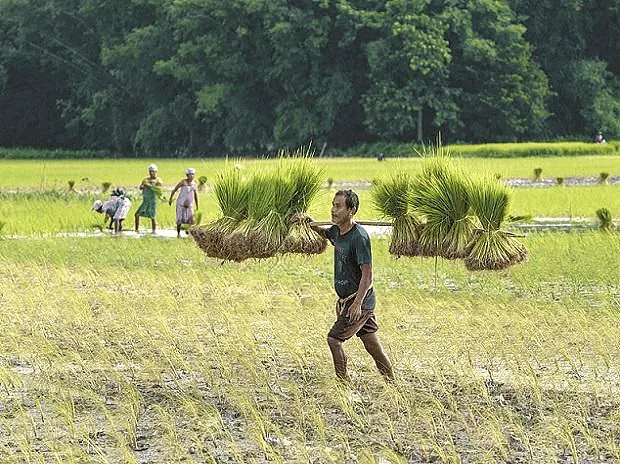
- When the work is over the entire village celebrates. People get together to cook and eat, sing and dance. They do their special ‘cheraw’ dance. In this dance people sit in pairs in front of each other, holding bamboo sticks on the ground. As the drum beats, the bamboos are beaten to the ground. Dancers step in and out of the bamboo sticks, and dance to the beat
- About three-fourths of people in Mizoram are linked to the forests. Life is difficult but almost all children go to school. You can see some of them here, playfully blowing their leaf whistles! You too have made many such whistles, haven’t you!
|
53 videos|388 docs|51 tests
|
FAQs on Whose Forests? Class 5 Notes EVS Chapter 20
| 1. What is the significance of lottery for farming in Mizoram? |  |
| 2. How does Suryamani's Torang play a role in the story "Daughter of the Jungle"? |  |
| 3. What is jhoom farming and why is it important in Mizoram? |  |
| 4. How does the theme of "Whose Forests?" relate to the article's content? |  |
| 5. How does the character of Suryamani represent the relationship between humans and nature in the story? |  |















